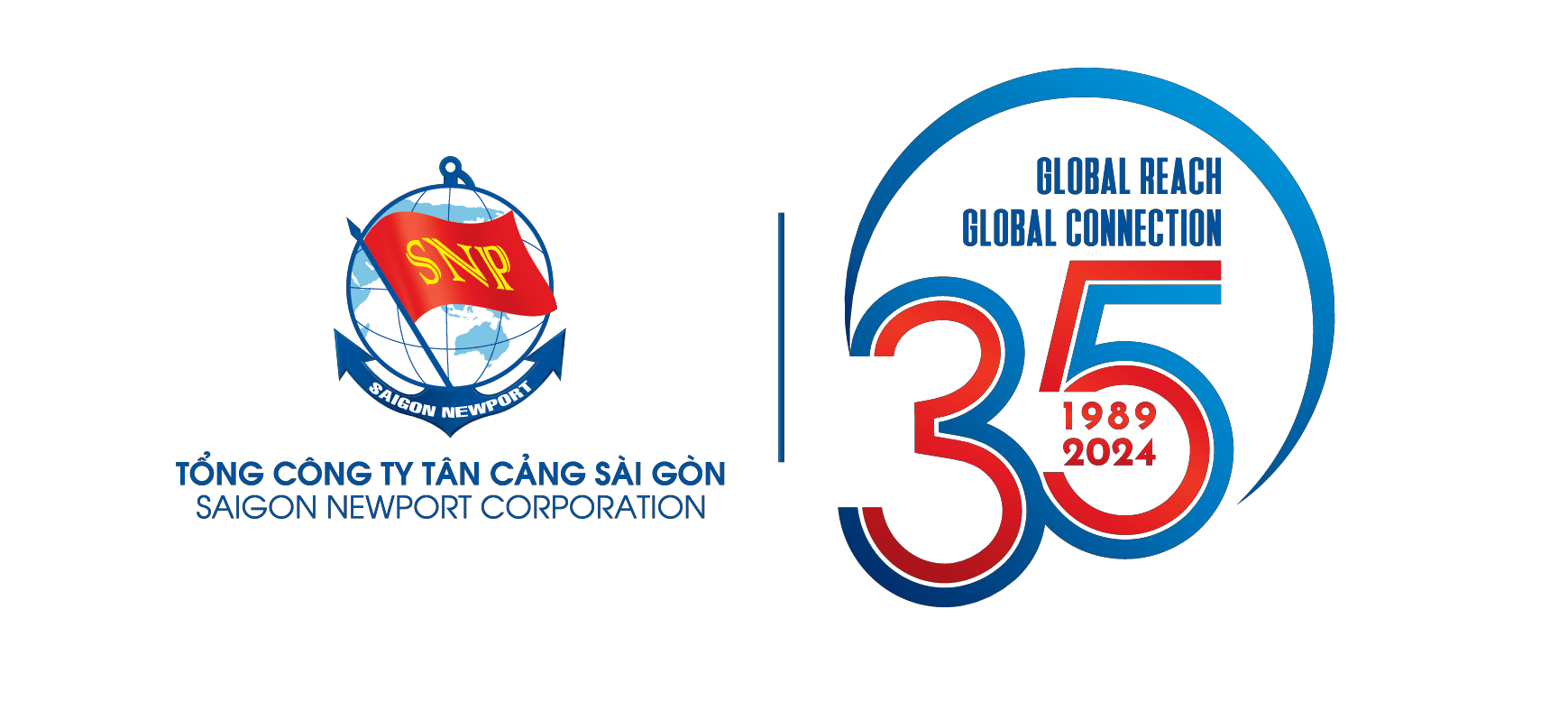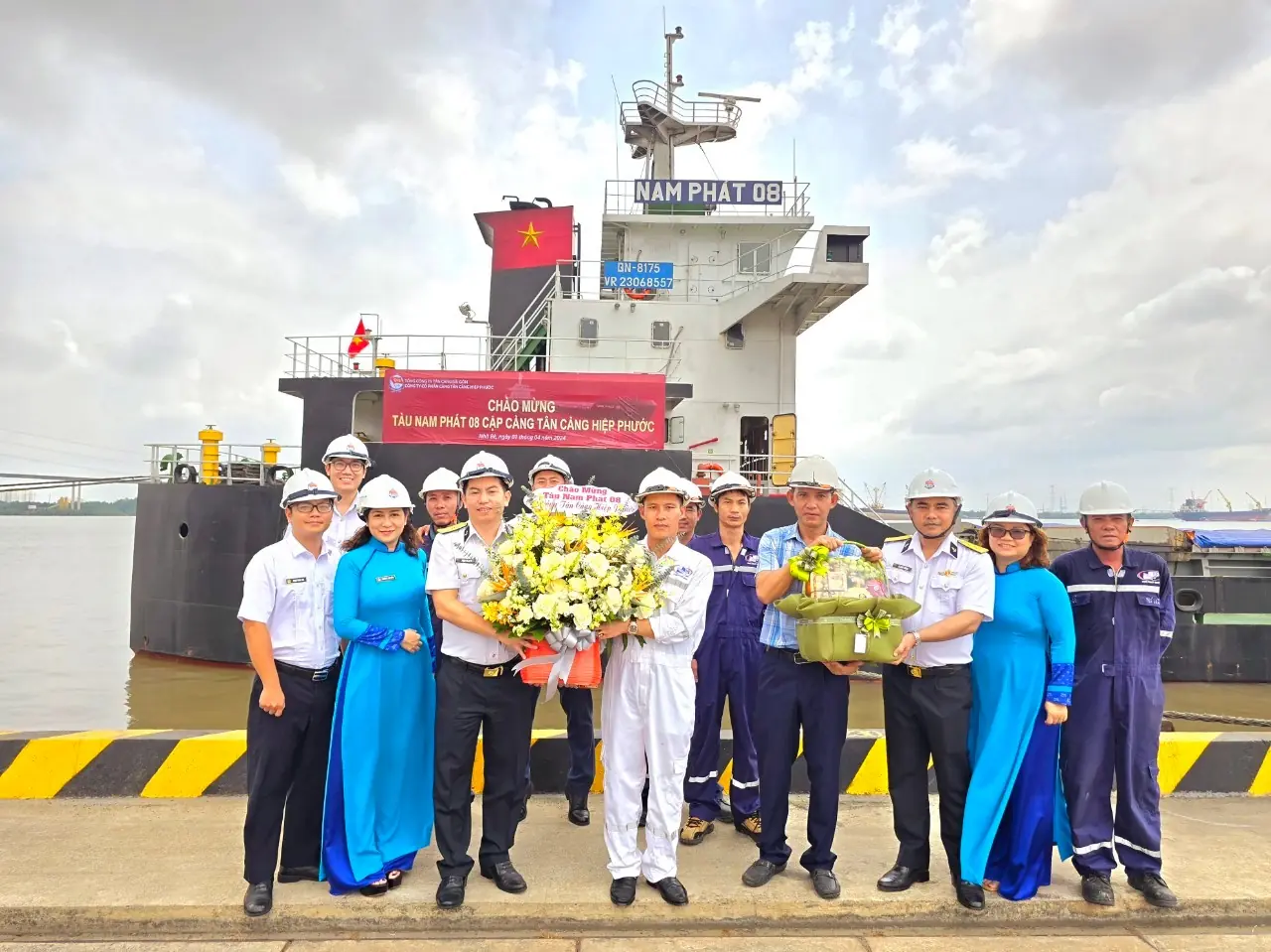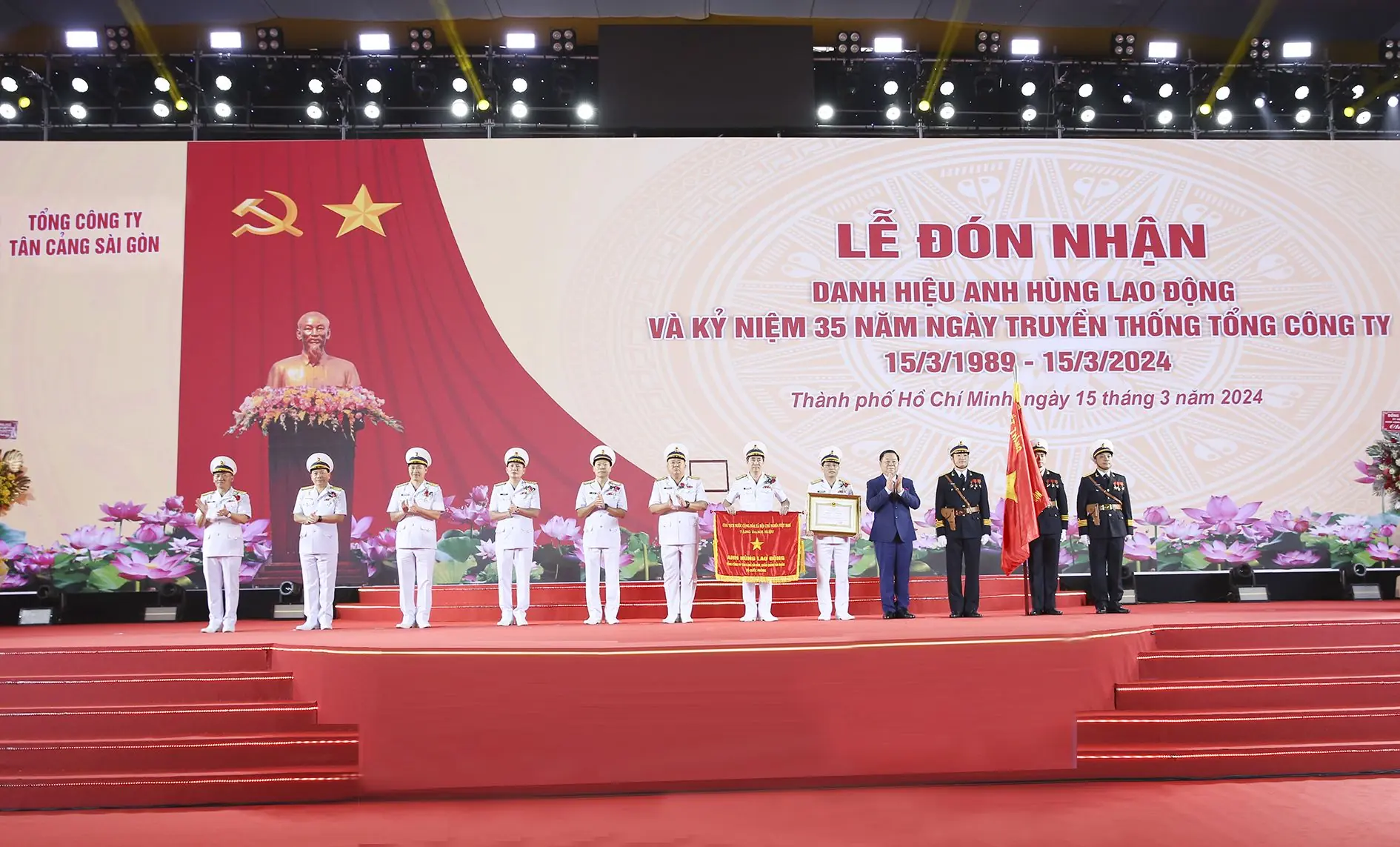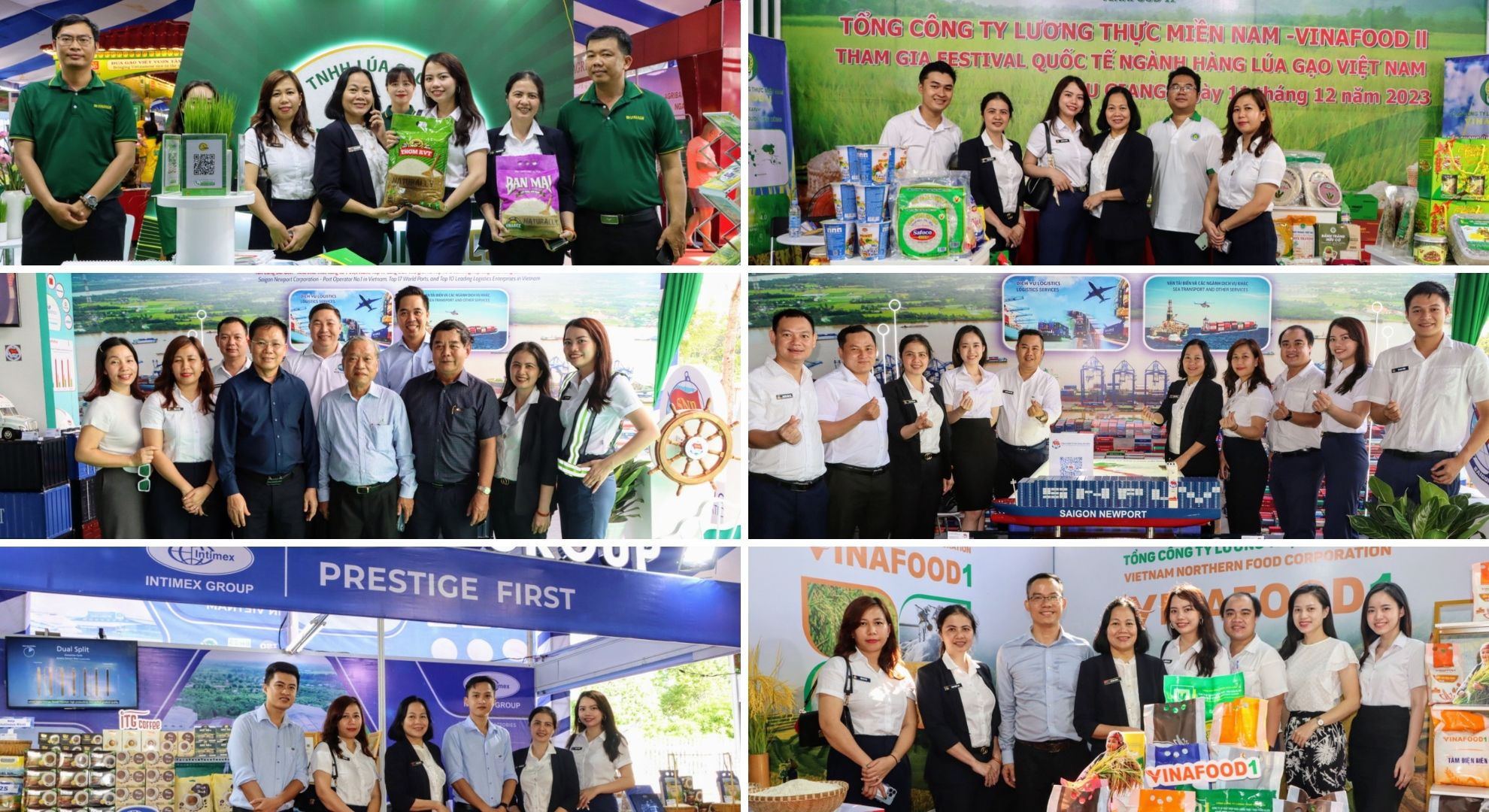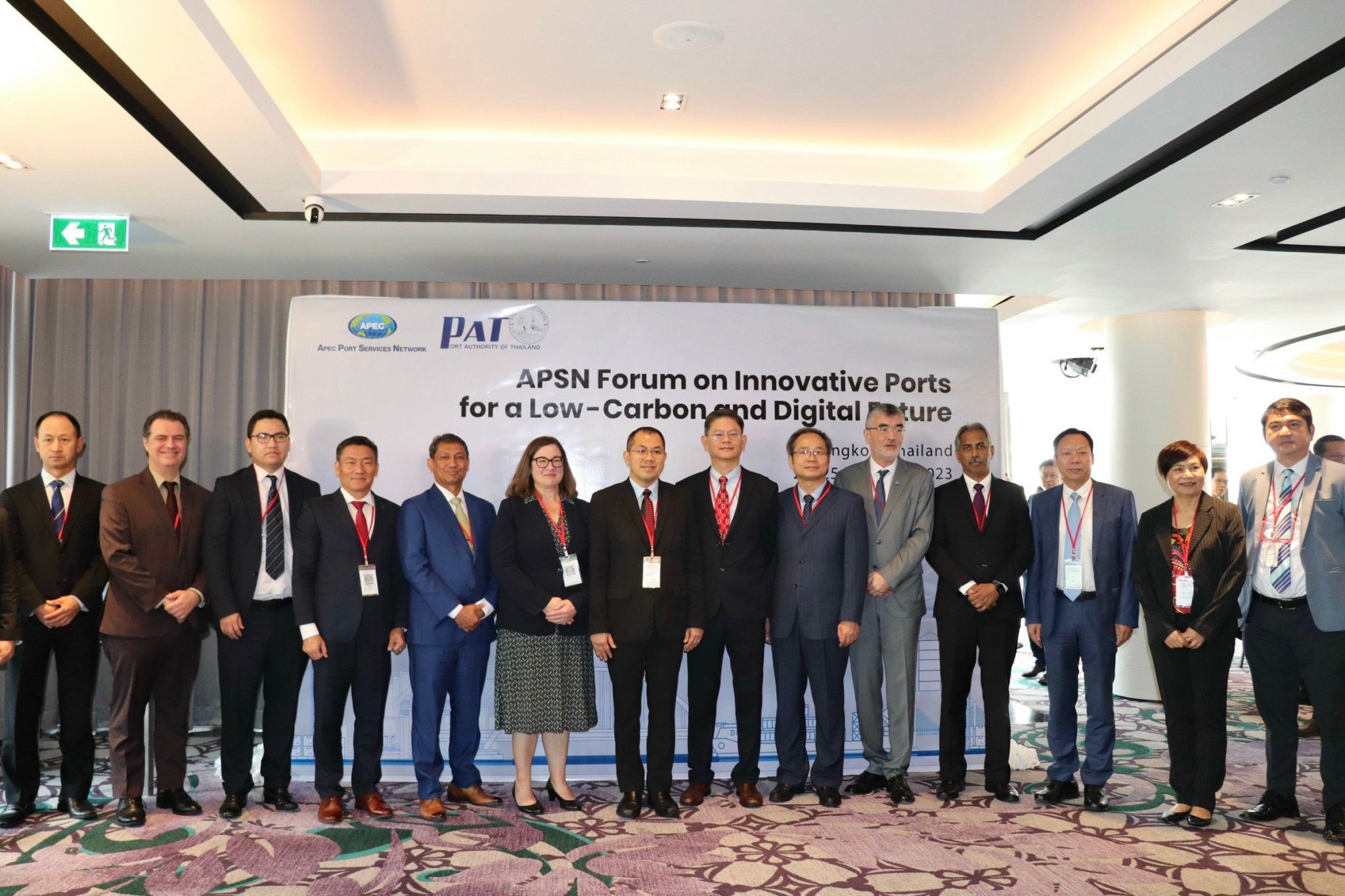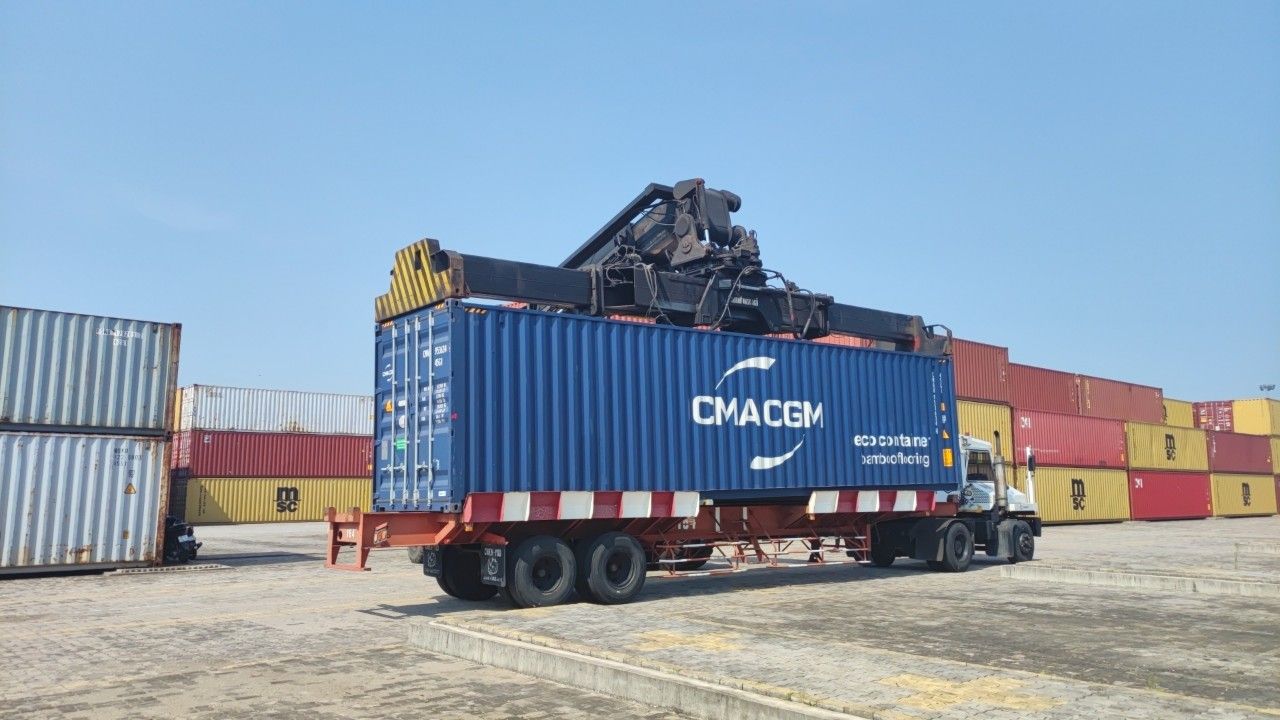Inland waterways transport: green logistics trends and some remarkable advantages during the epidemic Covid-19
17/09/2021
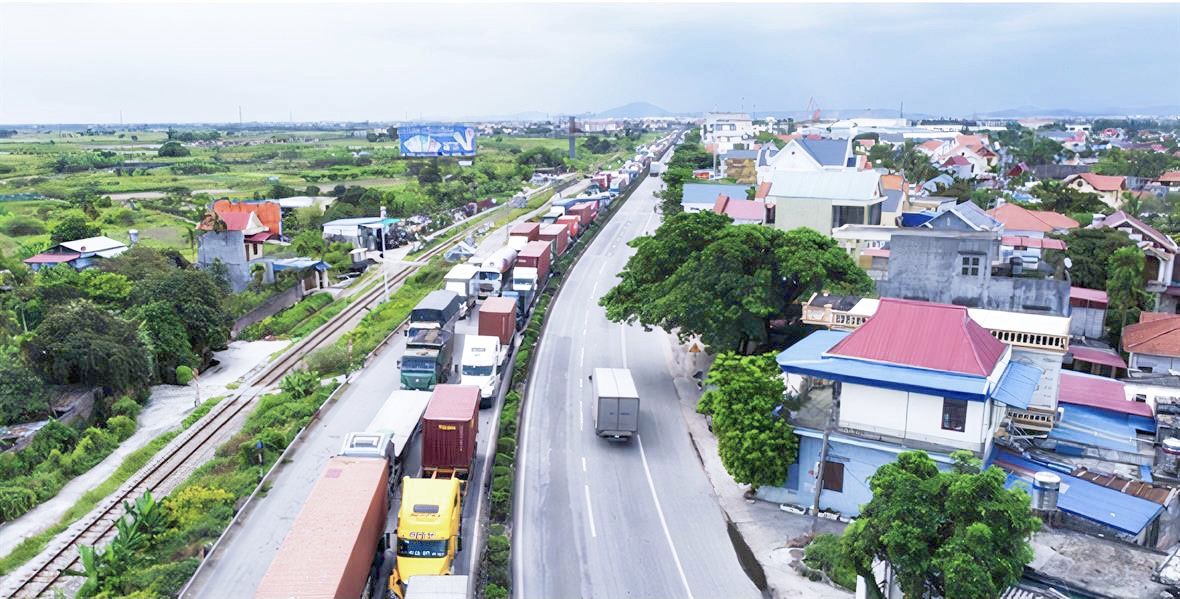
Having outstanding advantages following with constructive policies to develop inland waterways for the last 2 years, barging transportation emerges to be an advantageous intercity transport option connecting the Red River industrial zone with the Hai Phong port cluster.
Waterway Transport - The optimal transport option in the pandemic and in the future
More than 90% of the freight is transported by truck in northern Vietnam. This fact has put pressure on National Highway 5, National Highway 5B, and National Highway 18 - connecting industrial parks with Hai Phong's seaport system. According to Vidifi's statistics, 34.500 vehicles circulating on Highway 5, along with the epidemic prevention measure to control 100% of vehicles entering the city, have caused a traffic jam lasting up to 30 km at the gateway of Hai Phong city. Production interruptions affected many enterprises due to lack of raw materials, plus additional costs such as fuel costs, testing fees, trailer and vehicle storage fees, etc.
These difficulties have driven enterprises to seek alternative transport solutions - inland waterway transport, taking advantage of natural benefits from the Cam river - Kinh Thay river - Duong river route, and developed entirely Bac Ninh river ports such as Tan Cang - Que Vo ICD, Tri Phuong Port, creating a hub and spoke model to facilitate the transshipment of goods, ensuring continuity of production and supply chains.
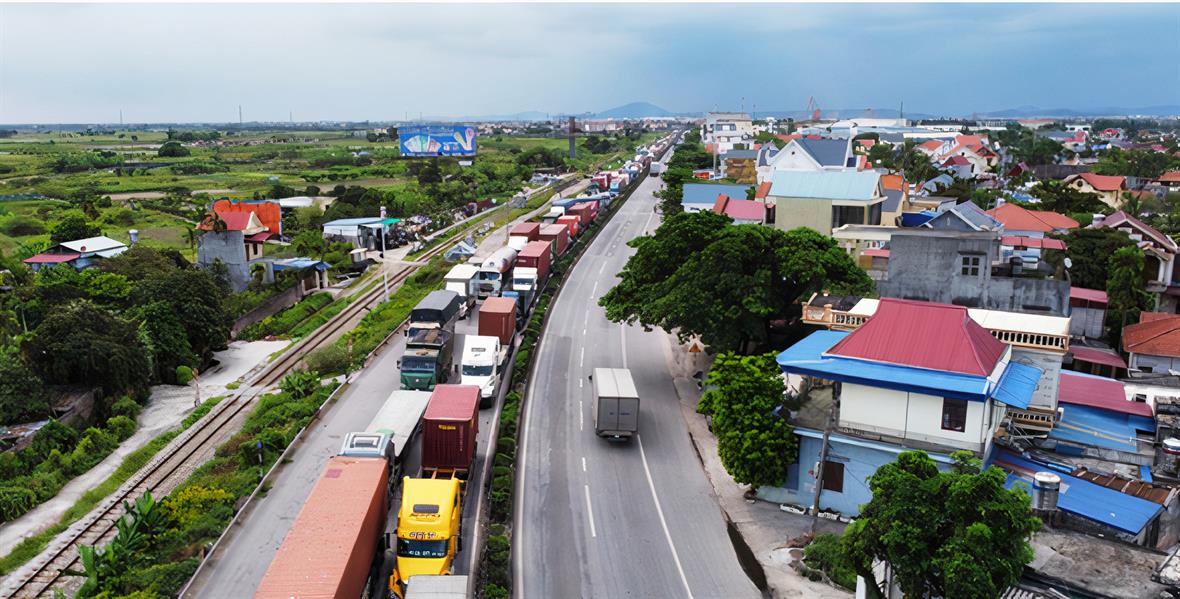
Traffic jam at the gateway of Hai Phong city (Source: tuoitre)
In fact, unlike interprovincial trucking transport, barge crew members are not allowed to go ashore during berthing, so they are not required to be tested for Covid when traveling to other areas. This has helped the waterway transport system be classified as the green lane, thereby guaranteeing the continuity of the cargo flow.
In addition to these dominant advantages during the epidemic, waterways can meet the demand for large quantities of cargo, especially when the Inland Waterway Administration assesses the Northern River System as suitable for circulating 100 TEUs carriers. In addition, the safety of this transportation method has been verified when no incidents or accidents were recorded related to barges throughout 2020.
In terms of the environment, barging transport is considered highly energy-saving. According to a study by the American River Port Association, barges can travel 85 km with the same 1 liter of fuel to carry the same ton of cargo, while tractors can only travel approximately 10 km. Furthermore, the routes on which this type of transportation operates are often located away from populated areas, helping reduce urban noise and pollution problems, corresponding with the urbanization process.
Government's policies and guidelines for the shipping industry
On August 18, 2021, Minister of Transport Nguyen Van The issued official dispatch No. 8585 / BGTVT-VT, requesting relevant ministries and agencies, provinces and cities under the central government to create favorable conditions for transport by waterways. Details include:
This is a reliable signal to enterprises in the North of Vietnam, when there are now alternative transport solutions to ensure a stable and continuous import and export chain, thereby maintaining production and business development. However, this is only one of the proposed actions to fulfill the tasks of Directive No. 37/CT-TTG approved by the Prime Minister on promoting the development of inland waterway transport and coastal shipping by waterway transport released in September 2020. There are still many projects, policies and support mechanisms in the short and long term to enhance the development of inland waterway transport as part of the Vietnamese Government’s green, strong and sustainable industrial development plan.
Green Logistics Trends
Green logistics are all efforts to minimize the ecological impact of logistics operations. Green logistics is the goal to create sustainable value when balancing economic efficiency and environmental protection. Green logistics requires close coordination between factors: government, community and businesses. If only one component is missing in the system, green logistics will not be effective.
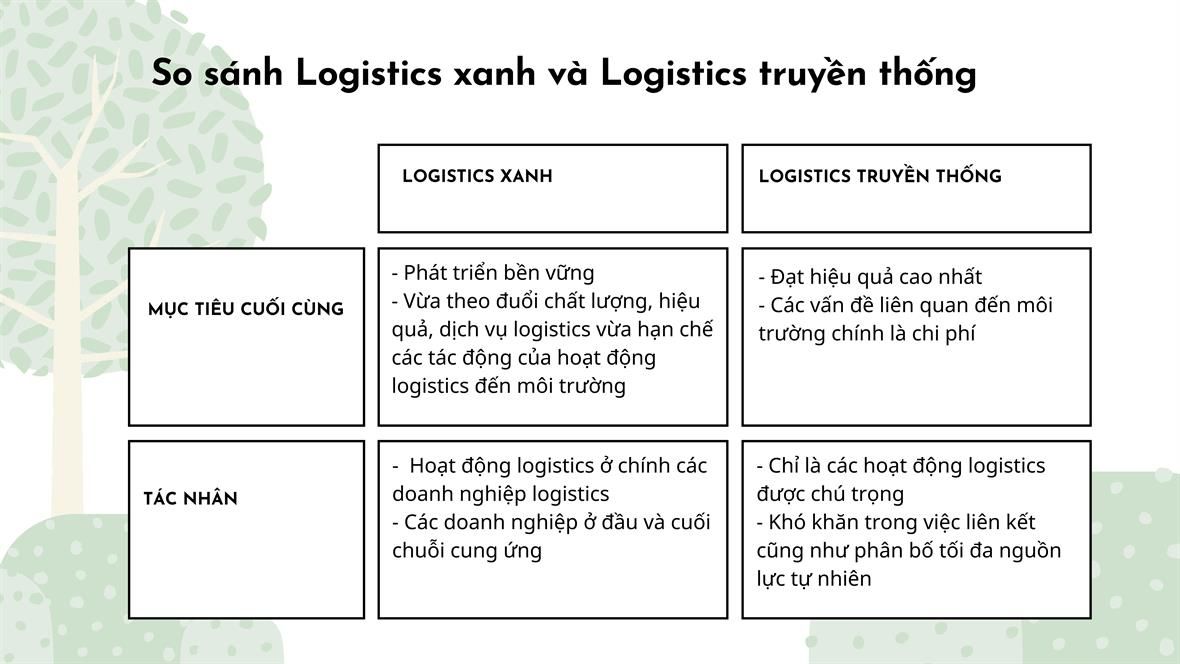
SNP and Green Logistics Solutions in the North of Vietnam
As a leading port operator and logistics service provider in Vietnam, Saigon Newport Corporation (SNP) successfully deployed a multimodal transport solution (waterways - trucking combined) in the southern region - with the active participation of subsidiary units in the system. Applying the effectiveness of the above method in ensuring supply chain connectivity in the Northern region, SNP has developed a multimodal transport solution (waterways – trucking combination) to continuously transport goods on the Bac Ninh - Hai Phong route, to meet production demands. This solution is deployed in a synchronous combination between Tan Cang Waterway Transport and other land transport units with a transshipment point at Tan Cang - Que Vo ICD (Bac Ninh).
On August 19, the Ministry of Transport issued Decision No. 1543/QD-BGTVT announcing the opening of the Que Vo inland container depot in the detailed planning for the development of Vietnam's inland port system until 2020, with the vision to 2020, direction to 2030. Tan Cang - Que Vo ICD is one of 10 announced inland container depots in Vietnam. With a total area of nearly 10 hectares, including 5 berths that can simultaneously handle 5 barges with a tonnage of 160 TEUs, the capacity is estimated at 6 million tons/year. In the future, the TC-QV ICD will continue to expand to more than 30 hectares, adding warehouses, a consolidation center, and looks forward to becoming a logistics center in Bac Ninh, Bac Giang and all adjacent areas.
The development of Tan Cang - Que Vo ICD will play an important role in promoting cargo using waterways connecting huge industrial zones in Bac Ninh, Bac Giang, to Hai Phong port cluster, providing Green logistics solution that is both economical and able to reduce greenhouse gas emitted from transporting activities (a 72-90 barge equals 35-40 tractors), satisfy the demand for a green supply chain that the Government, Enterprises and Community have been expecting and looking for.
Thanh Trung Le
Source: http://www.tapchigiaothong.vn/xu-huong-logistics-xanh-duong-thuy-noi-dia-loi-the-dac-biet-trong-dich-covid-19-d92561.html
(P.MKT)
More than 90% of the freight is transported by truck in northern Vietnam. This fact has put pressure on National Highway 5, National Highway 5B, and National Highway 18 - connecting industrial parks with Hai Phong's seaport system. According to Vidifi's statistics, 34.500 vehicles circulating on Highway 5, along with the epidemic prevention measure to control 100% of vehicles entering the city, have caused a traffic jam lasting up to 30 km at the gateway of Hai Phong city. Production interruptions affected many enterprises due to lack of raw materials, plus additional costs such as fuel costs, testing fees, trailer and vehicle storage fees, etc.
These difficulties have driven enterprises to seek alternative transport solutions - inland waterway transport, taking advantage of natural benefits from the Cam river - Kinh Thay river - Duong river route, and developed entirely Bac Ninh river ports such as Tan Cang - Que Vo ICD, Tri Phuong Port, creating a hub and spoke model to facilitate the transshipment of goods, ensuring continuity of production and supply chains.

Traffic jam at the gateway of Hai Phong city (Source: tuoitre)
In fact, unlike interprovincial trucking transport, barge crew members are not allowed to go ashore during berthing, so they are not required to be tested for Covid when traveling to other areas. This has helped the waterway transport system be classified as the green lane, thereby guaranteeing the continuity of the cargo flow.
In addition to these dominant advantages during the epidemic, waterways can meet the demand for large quantities of cargo, especially when the Inland Waterway Administration assesses the Northern River System as suitable for circulating 100 TEUs carriers. In addition, the safety of this transportation method has been verified when no incidents or accidents were recorded related to barges throughout 2020.
In terms of the environment, barging transport is considered highly energy-saving. According to a study by the American River Port Association, barges can travel 85 km with the same 1 liter of fuel to carry the same ton of cargo, while tractors can only travel approximately 10 km. Furthermore, the routes on which this type of transportation operates are often located away from populated areas, helping reduce urban noise and pollution problems, corresponding with the urbanization process.
Government's policies and guidelines for the shipping industry
On August 18, 2021, Minister of Transport Nguyen Van The issued official dispatch No. 8585 / BGTVT-VT, requesting relevant ministries and agencies, provinces and cities under the central government to create favorable conditions for transport by waterways. Details include:
- Requesting the People's Committees of the provinces and cities directly under the Central Government to create favorable conditions for people and businesses to transport goods on the Inland Waterway (IWT) to avoid disruption of the transport and logistics chain for production. At the same time, the management of functional agencies to ensure effective epidemic prevention and control, and to strictly deal with violations by enterprises and individuals.
- The Ministry of Agriculture and Rural Development, together with local authorities, will guide and create favorable conditions for people to transport goods and agricultural products on inland canals and ditches to connect IWT routes, ports and terminals.
- Enterprises involved in freight transport strictly follow the government's directives and regulations on epidemic prevention.
This is a reliable signal to enterprises in the North of Vietnam, when there are now alternative transport solutions to ensure a stable and continuous import and export chain, thereby maintaining production and business development. However, this is only one of the proposed actions to fulfill the tasks of Directive No. 37/CT-TTG approved by the Prime Minister on promoting the development of inland waterway transport and coastal shipping by waterway transport released in September 2020. There are still many projects, policies and support mechanisms in the short and long term to enhance the development of inland waterway transport as part of the Vietnamese Government’s green, strong and sustainable industrial development plan.
Green Logistics Trends
Green logistics are all efforts to minimize the ecological impact of logistics operations. Green logistics is the goal to create sustainable value when balancing economic efficiency and environmental protection. Green logistics requires close coordination between factors: government, community and businesses. If only one component is missing in the system, green logistics will not be effective.

SNP and Green Logistics Solutions in the North of Vietnam
As a leading port operator and logistics service provider in Vietnam, Saigon Newport Corporation (SNP) successfully deployed a multimodal transport solution (waterways - trucking combined) in the southern region - with the active participation of subsidiary units in the system. Applying the effectiveness of the above method in ensuring supply chain connectivity in the Northern region, SNP has developed a multimodal transport solution (waterways – trucking combination) to continuously transport goods on the Bac Ninh - Hai Phong route, to meet production demands. This solution is deployed in a synchronous combination between Tan Cang Waterway Transport and other land transport units with a transshipment point at Tan Cang - Que Vo ICD (Bac Ninh).
On August 19, the Ministry of Transport issued Decision No. 1543/QD-BGTVT announcing the opening of the Que Vo inland container depot in the detailed planning for the development of Vietnam's inland port system until 2020, with the vision to 2020, direction to 2030. Tan Cang - Que Vo ICD is one of 10 announced inland container depots in Vietnam. With a total area of nearly 10 hectares, including 5 berths that can simultaneously handle 5 barges with a tonnage of 160 TEUs, the capacity is estimated at 6 million tons/year. In the future, the TC-QV ICD will continue to expand to more than 30 hectares, adding warehouses, a consolidation center, and looks forward to becoming a logistics center in Bac Ninh, Bac Giang and all adjacent areas.
The development of Tan Cang - Que Vo ICD will play an important role in promoting cargo using waterways connecting huge industrial zones in Bac Ninh, Bac Giang, to Hai Phong port cluster, providing Green logistics solution that is both economical and able to reduce greenhouse gas emitted from transporting activities (a 72-90 barge equals 35-40 tractors), satisfy the demand for a green supply chain that the Government, Enterprises and Community have been expecting and looking for.
Thanh Trung Le
Source: http://www.tapchigiaothong.vn/xu-huong-logistics-xanh-duong-thuy-noi-dia-loi-the-dac-biet-trong-dich-covid-19-d92561.html
(P.MKT)
